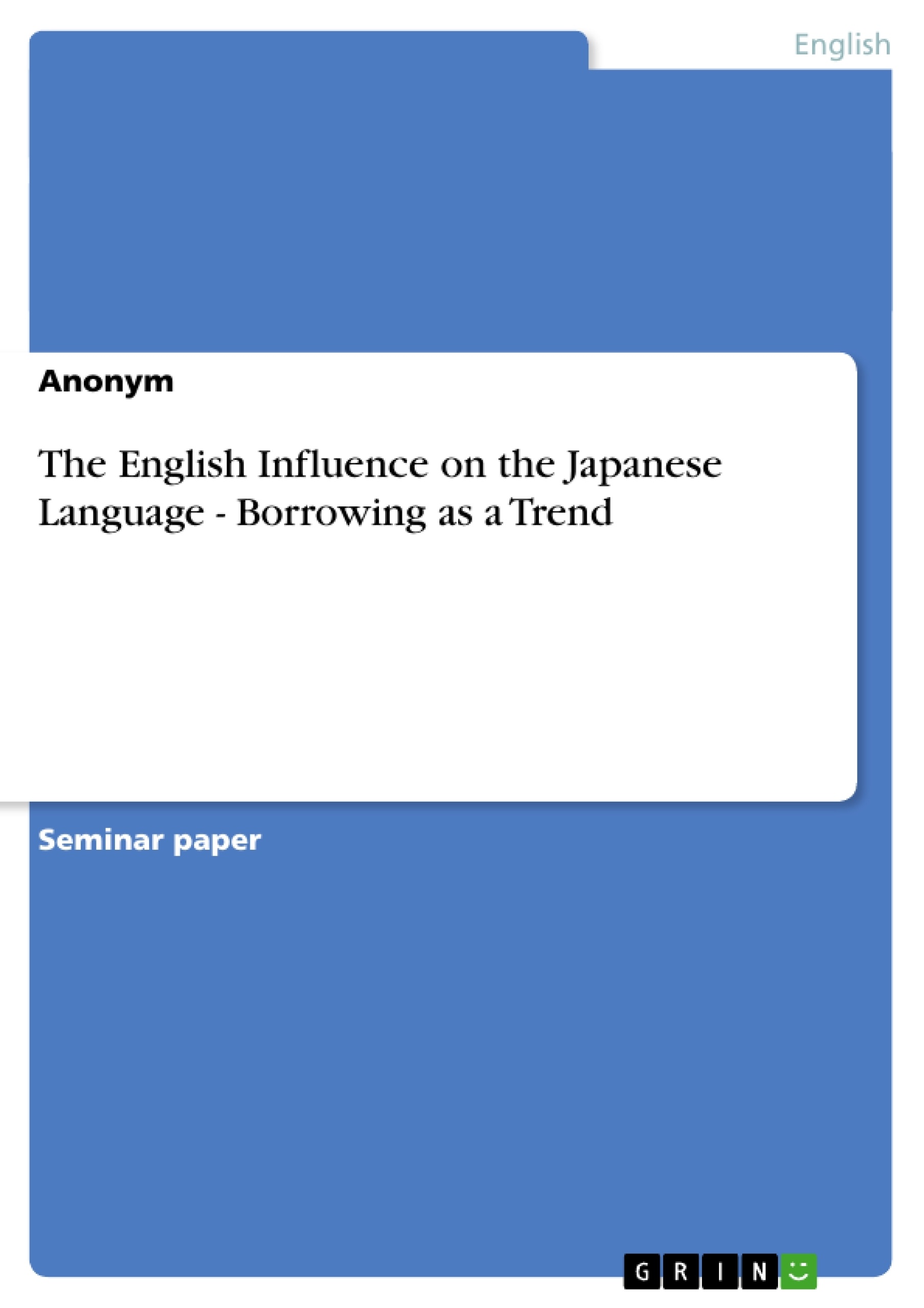Languages have always been in contact with other languages. Much has been written about language contact among Indo-European languages. Thus, this paper aims to shed some light in the direction of a so-called exotic language: Japanese. For many it is still a language considered to be unaffected by outer influences due to its grammatical complexity and geographical origin. But quite the opposite is the case. Japanese culture and language comprise an abundance of English or foreign expressions respectively which gives rise to take a closer look, first of all what borrowing means in theory, and then how this can be applied on the subject of Japanese borrowings in particular, in terms of how much is borrowed, especially from the English language, and how the borrowings are integrated into the native Japanese language system.
Inhaltsverzeichnis (Table of Contents)
- Introduction
- Chapter I - Introduction to Borrowing
- Chapter II - The Japanese Language in Contact
- Chapter III - Integrating Borrowings into Japanese
- Chapter IV - Final Remark
- References
- Appendices
Zielsetzung und Themenschwerpunkte (Objectives and Key Themes)
This paper aims to explore the influence of English on the Japanese language, specifically focusing on the phenomenon of borrowing. Despite its complex grammar and geographical isolation, Japanese has been significantly influenced by foreign languages, particularly English. The paper will examine the theoretical framework of borrowing, its application to Japanese borrowings from English, and the integration of borrowed words into the Japanese language system.
- The nature and process of language borrowing
- The influence of English on the Japanese language
- The integration of borrowed words into the Japanese language system
- Factors influencing language contact and change
- The role of social context in language borrowing
Zusammenfassung der Kapitel (Chapter Summaries)
Chapter I introduces the concept of language borrowing and explores different types of language contact situations, including language maintenance, language shift, and the creation of new contact languages. It discusses the process of borrowing, including lexical borrowing, structural borrowing, and code-switching, and highlights factors that influence the outcomes of language contact.
Chapter II delves into the specific case of the Japanese language and its contact with English. It examines the historical and cultural factors that have contributed to the influx of English borrowings into Japanese. It discusses the role of globalization, technology, and cultural exchange in shaping the linguistic landscape of Japan.
Chapter III investigates how borrowed English words are integrated into the Japanese language system. It analyzes the phonological, morphological, and semantic adaptations that take place when English words are incorporated into Japanese. It explores the challenges and strategies involved in adapting borrowed words to the grammatical structure and phonological system of Japanese.
Schlüsselwörter (Keywords)
This paper examines the influence of English on the Japanese language through the lens of borrowing. Key concepts include language contact, borrowing, lexical borrowing, structural borrowing, code-switching, language maintenance, language shift, pidgins, creoles, Japanese language, English language, globalization, cultural exchange, and language adaptation.
- Quote paper
- Anonym (Author), 2004, The English Influence on the Japanese Language - Borrowing as a Trend, Munich, GRIN Verlag, https://www.grin.com/document/46956



